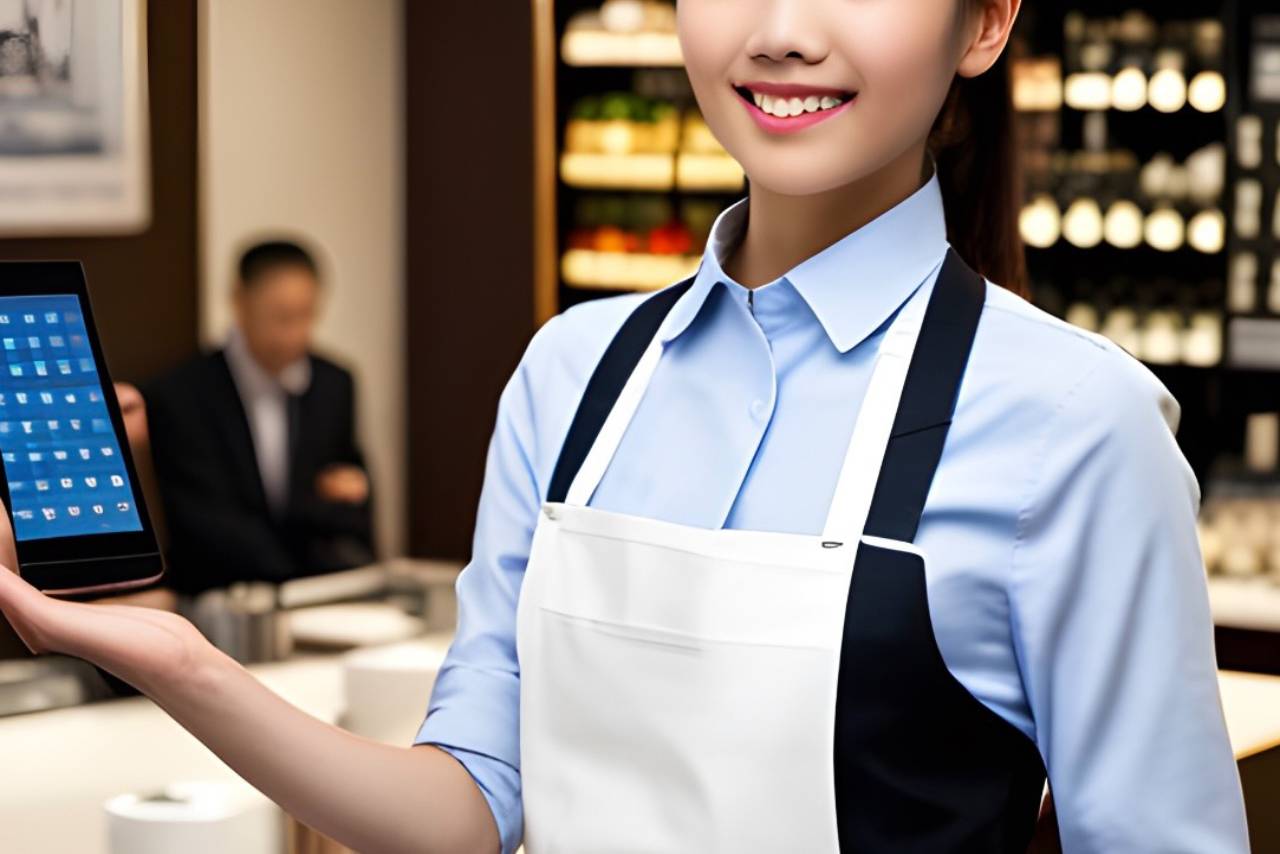How to Choose the Right Quick Service Restaurant Scheduling App
A Restaurant Scheduling App streamlines operations, improves employee satisfaction, ensures compliance, and optimizes labor management for quick service restaurants.

Why Quick Service Restaurants Need a Scheduling App
Quick service restaurants (QSRs) operate in a fast-paced, demanding environment where efficiency is critical to success. From managing a diverse workforce to adapting to fluctuating customer demands, scheduling is a significant challenge for restaurant owners and managers. Traditional methods of employee scheduling - like spreadsheets or pen-and-paper systems - often fall short in addressing these challenges effectively.
One of the most pressing issues is managing shifts for a workforce that typically includes part-time employees and high turnover rates. This dynamic workforce requires constant adjustments to schedules, often leading to confusion, errors, and employee dissatisfaction. Additionally, staying compliant with labor laws, such as regulations around overtime, meal breaks, and maximum working hours, adds another layer of complexity.
A scheduling app tailored to the needs of QSRs can solve these challenges. By automating and streamlining the scheduling process, these apps reduce administrative burdens, prevent scheduling conflicts, and ensure compliance with labor laws. Moreover, features like real-time updates and mobile accessibility improve communication, keeping employees informed and engaged.
The benefits extend beyond operational efficiency. A well-implemented scheduling app enhances employee satisfaction by accommodating availability preferences and making shift-swapping easier. Happy employees are more likely to stay loyal to the business, reducing turnover and training costs.
This article serves as a comprehensive guide to help restaurant owners navigate the process of choosing the right scheduling app for their quick service restaurant. By understanding their unique needs and evaluating key features, QSR owners can make informed decisions that optimize both operations and employee satisfaction.

Understanding the Unique Scheduling Needs of Quick Service Restaurants
Quick service restaurants (QSRs) face unique scheduling demands that set them apart from other industries. The fast-paced nature of the business, coupled with fluctuating customer volumes, requires a flexible and efficient approach to workforce management. To make scheduling seamless, restaurant owners must address several key challenges.
Managing High Employee Turnover and Part-Time Staff
QSRs often rely on part-time employees, students, or seasonal workers, which contributes to a higher-than-average employee turnover rate. This transient workforce makes it crucial to have a system that can quickly adapt to frequent hiring, onboarding, and scheduling changes. A robust scheduling app allows managers to create and adjust shifts with ease, ensuring that staffing needs are met without overburdening employees.
Adapting to Dynamic Shifts During Peak and Off-Peak Hours
Customer traffic in QSRs fluctuates significantly throughout the day, with distinct peak and off-peak hours. For example, lunch rushes may require maximum staffing, while mid-afternoon hours might only need a skeleton crew. An effective scheduling solution should provide insights into historical data to predict staffing needs accurately. With the right app, managers can create dynamic schedules that allocate resources effectively and prevent under- or over-staffing.
Ensuring Compliance with Labor Laws and Regulations
Labor laws can be a headache for QSR owners if not managed properly. Laws and regulations around overtime, breaks, and maximum shift hours require careful tracking and documentation. Non-compliance can result in hefty fines or lawsuits, making it essential to use a scheduling app that incorporates compliance tracking. Such tools ensure that shifts are scheduled within legal limits and that employees get the breaks they are entitled to.
By addressing these challenges, a scheduling app becomes an indispensable tool for quick service restaurants. Its ability to streamline processes and enhance employee satisfaction ensures smoother operations and a better overall customer experience. Whether it's managing turnover, handling peak-hour shifts, or staying compliant, these solutions empower QSR owners to focus on what matters most- running a successful business.
Key Features to Look for in a Scheduling App
Selecting the right scheduling app for a quick service restaurant requires careful evaluation of its features. To meet the unique demands of QSRs, the app must go beyond basic scheduling capabilities and provide tools that enhance efficiency, compliance, and employee engagement. Here are the key features to prioritize when choosing a scheduling app.
Real-Time Scheduling and Instant Updates
In a QSR environment, last-minute changes are inevitable. Employees might call in sick, or unexpected demand might require additional staff. Real-time scheduling and instant update capabilities allow managers to make changes on the fly, ensuring shifts are always covered. Notifications sent directly to employees' mobile devices keep them informed, reducing miscommunication and no-shows.
Mobile Accessibility for Managers and Employees
A scheduling app must be mobile-friendly to accommodate a workforce that's always on the move. Employees should be able to view their schedules, request time off, and swap shifts directly from their smartphones. For managers, mobile accessibility enables them to handle scheduling tasks remotely, ensuring flexibility and faster decision-making.
Shift-Swapping, Availability Tracking, and Time-Off Requests
One of the most significant advantages of a scheduling app is its ability to empower employees. Features like shift-swapping and time-off requests let staff take ownership of their schedules without disrupting workflow. Availability tracking ensures that managers schedule shifts based on employees' stated preferences, reducing the likelihood of conflicts and boosting morale.
Integration with POS Systems and Payroll Management
Seamless integration with existing systems, such as POS and payroll management software, enhances operational efficiency. By syncing scheduling data with payroll, managers can automate calculations for hours worked, overtime, and tips, minimizing errors and saving time. Integration with POS systems also helps track employee performance, enabling data-driven staffing decisions.
Reporting and Analytics Tools for Labor Optimization
A robust scheduling app should provide actionable insights through reporting and analytics. These tools allow managers to identify patterns, such as peak customer times or excessive labor costs, and adjust schedules accordingly. By optimizing labor, QSRs can ensure that they have the right number of employees on duty at all times, leading to better service and cost savings.
By prioritizing these features, restaurant owners can select a scheduling app that aligns with their operational needs and enhances both efficiency and employee satisfaction. From real-time updates to payroll integration, the right app can transform the way QSRs manage their workforce.
Evaluating User-Friendliness and Customization
The success of a scheduling app in a quick service restaurant (QSR) depends largely on its user-friendliness and ability to adapt to the specific needs of the business. A complicated or rigid system can discourage adoption, while an intuitive and customizable app streamlines operations and improves employee engagement.
Importance of Intuitive Design and Ease of Use
A scheduling app should prioritize simplicity and accessibility. Managers and employees often have limited time to navigate complex systems, so an intuitive interface ensures quick adoption. Features like drag-and-drop shift creation, color-coded schedules, and clear navigation menus make the app easy to use, even for those with minimal technical experience.
Ease of use is not just for managers - it's essential for employees too. An app that allows staff to check schedules, request time off, or swap shifts without hassle fosters a positive user experience. When employees can quickly find the information they need, it reduces frustration and builds trust in the system.
Ability to Customize Shift Settings, Notifications, and Team Communication
Every QSR has unique operational needs, and a one-size-fits-all approach won't work. A strong scheduling app offers customization options that let managers tailor settings to their restaurant's specific requirements. This might include setting limits on shift lengths, accommodating employee availability, or adjusting labor compliance rules for different locations.
Notifications are another critical feature that benefit from customization. Managers can configure alerts for upcoming shifts, changes, or time-off approvals to ensure clear communication. Employees can also opt into personalized notifications to stay informed about their schedules and updates.
Effective team communication is vital for smooth operations, and many scheduling apps include built-in messaging systems. Customizable communication channels allow managers to send targeted messages to specific employees or groups, such as kitchen staff or cashiers, ensuring everyone receives relevant information without unnecessary clutter.
By emphasizing intuitive design and customization, QSR owners can ensure that their scheduling app not only meets operational needs but also improves the overall experience for both managers and employees. These features lay the foundation for seamless implementation and long-term success.

Integration with Existing Systems
For quick service restaurants (QSRs), efficiency is key, and integrating a scheduling app with existing systems is essential to achieve a streamlined operation. When a scheduling app works seamlessly with tools already in use, such as payroll systems, time clocks, and inventory management software, it can significantly improve workflow and data management.
Importance of Seamless Integration with Tools Like Payroll Systems
A scheduling app that integrates with payroll systems can save time and reduce errors in calculating employee wages. By automatically transferring data such as hours worked, overtime, and paid time off, the app eliminates the need for manual entry and ensures accuracy. This integration not only simplifies payroll processing but also boosts employee trust by ensuring timely and accurate payments.
Integration with payroll systems also helps in managing compliance with labor laws. By tracking and recording break times, overtime, and other labor data, the app ensures that restaurants stay within legal limits while maintaining accurate records for audits or disputes.
Time Clocks and Attendance Tracking
Many scheduling apps integrate with digital time clocks, enabling precise attendance tracking. This feature allows employees to clock in and out directly through the app or via connected hardware, ensuring real-time updates to their schedules. It also helps managers monitor tardiness, absences, and overall attendance trends, which can inform staffing decisions.
Seamlessly connecting time clocks with scheduling software ensures that labor data flows effortlessly into payroll systems, creating a unified and efficient workflow.
Inventory Management and POS Integration
For QSRs, aligning labor schedules with sales data is critical to managing labor costs and optimizing staffing levels. Scheduling apps that integrate with POS systems provide insights into sales trends, enabling managers to adjust shifts based on peak hours or seasonal demand. For example, if sales data shows a surge during lunchtime, managers can schedule additional staff to maintain service quality.
Similarly, integration with inventory management tools can align labor needs with kitchen operations. This ensures that enough staff is present to handle busy times while minimizing labor costs during slower periods.
Benefits of Centralized Data for Operational Efficiency
When a scheduling app integrates with other systems, it creates a centralized hub for all operational data. This centralization allows managers to access key metrics - such as labor costs, sales trends, and inventory levels - from a single platform. By having all the necessary information in one place, decision-making becomes faster and more informed.
Centralized data also supports better forecasting and planning. Managers can identify patterns, such as seasonal peaks, and prepare schedules and resources accordingly. This proactive approach reduces waste, controls costs, and enhances overall efficiency.
By choosing a scheduling app that integrates seamlessly with payroll, POS, and inventory systems, QSR owners can create a cohesive and efficient operational ecosystem. This integration not only saves time but also enhances accuracy, compliance, and decision-making, allowing restaurant managers to focus on delivering excellent service.
Top Scheduling Apps for Quick Service Restaurants
1. Zip Schedules
Zip Schedules is designed to simplify employee scheduling and enhance operational efficiency in the fast-paced environment of QSRs. Its key features include-
Ease of Use - The intuitive interface allows managers to create and modify schedules effortlessly, reducing the time spent on administrative tasks.
Real-Time Updates - Managers can implement last-minute changes, and employees receive instant notifications, ensuring everyone is informed promptly.
Mobile Accessibility - With a free mobile app, employees can access their schedules, request time off, and swap shifts anytime, promoting flexibility and engagement.
Compliance with Labor Laws - Zip Schedules assists in adhering to labor regulations by tracking certifications, training, and employee skills, thereby reducing the risk of violations.
Integration Capabilities - The app integrates with other systems, such as payroll and POS, streamlining operations and ensuring data consistency across platforms.
2. 7shifts
7shifts is tailored for restaurant scheduling, offering features like shift templates, labor compliance tools, and analytics to monitor labor costs and adjust staffing based on sales data.
3. When I Work
Known for its user-friendly design, When I Work provides shift-swapping capabilities, automated reminders, and time tracking to integrate scheduling with clock-in/clock-out data.
4. Deputy
Deputy combines scheduling with workforce management, offering forecasting based on sales and traffic data, task management, and a mobile-first design for on-the-go schedule management.
5. HotSchedules
A trusted platform in the restaurant industry, HotSchedules integrates with POS systems, ensures labor law compliance, and offers employee self-service features for managing availability and shift preferences.
6. Shiftboard
Ideal for complex scheduling needs, Shiftboard provides customizable scheduling rules, compliance tracking, and scalability to manage multiple locations and large teams efficiently.
Each of these apps offers unique features catering to the diverse needs of quick service restaurants. However, Zip Schedules stands out with its comprehensive suite of tools designed specifically to address the challenges faced by QSRs, making it a valuable asset for restaurant owners seeking to optimize their scheduling processes.
Tips for a Smooth Implementation
Successfully implementing a scheduling app in your quick service restaurant (QSR) is key to unlocking its full potential. While the right app brings efficiency and organization, a thoughtful rollout plan ensures that both managers and employees adapt quickly and effectively. Here are actionable tips for a smooth transition-
1. Engage Employees Early
Involving employees in the implementation process creates a sense of ownership and eases resistance to change. Introduce the app during team meetings and highlight how it will benefit them, such as making schedules more accessible and shift-swapping easier. Open the floor for questions to address concerns and build excitement about the new tool.
2. Provide Comprehensive Training
Not all employees may be tech-savvy, so offering clear instructions is essential. Host a short training session to demonstrate how to use the app's key features, like viewing schedules, submitting time-off requests, or swapping shifts. Use guides, videos, or one-on-one support for those who need extra help.
3. Start with a Trial Period
Before rolling out the scheduling app across the entire workforce, test it with a small group of employees. This trial run helps identify potential issues, such as technical glitches or feature gaps, and provides an opportunity to adjust settings based on feedback. Once refined, expand the implementation to the rest of the team.
4. Communicate Changes Clearly
A successful implementation depends on clear communication. Inform employees about the app's launch date, training sessions, and how it will change existing scheduling processes. Use multiple communication channels, such as emails, team meetings, and posters, to ensure everyone is on the same page.
5. Leverage Feedback for Continuous Improvement
After the app is live, encourage employees and managers to share their experiences. Collect feedback regularly to identify areas for improvement. For example, employees might request adjustments to notifications, or managers might suggest adding specific features. Use this input to refine how the app is used.
6. Monitor App Performance
Evaluate the app's effectiveness by tracking key metrics, such as reduced scheduling errors, improved employee attendance, or time saved in creating schedules. Use the app's reporting tools to analyze these metrics and adjust your processes as needed.
7. Keep Employees Motivated
Celebrate milestones, like the successful completion of the first month using the app, to keep employees engaged. Recognize individuals or teams who excel in adapting to the new system, and emphasize how the app has positively impacted operations and work-life balance.
8. Maintain Ongoing Support
Even after the app is fully implemented, ensure ongoing support is available. Designate a go-to person for troubleshooting or questions, and periodically revisit training materials to address new features or updates. Continuous support ensures long-term adoption and success.
By following these tips, quick service restaurants can seamlessly transition to a scheduling app, maximizing its benefits for both managers and employees. A well-planned implementation fosters trust, reduces resistance, and ensures that the app becomes an indispensable part of daily operations.
Making the Right Choice
Selecting the right scheduling app for your quick service restaurant is a strategic decision that can profoundly impact your business's efficiency, employee satisfaction, and overall success. By addressing the unique challenges of QSRssuch as high turnover, fluctuating staffing needs, and compliance with labor lawsthese apps streamline operations and improve communication across your team.
When choosing a scheduling app, focus on the features that align with your restaurant's specific needs. Prioritize tools that offer real-time updates, mobile accessibility, shift-swapping capabilities, and seamless integration with payroll and POS systems. Additionally, evaluate the app's user-friendliness and customization options to ensure both managers and employees can use it with ease.
Among the many options available, Zip Schedules stands out as a powerful solution tailored to the demands of quick service restaurants. With its intuitive interface, real-time notifications, and robust integration capabilities, it provides the tools necessary to optimize labor management and enhance employee engagement.
Implementation is just as important as selection. Engage your team early, provide thorough training, and establish clear communication to ensure a smooth rollout. Regular feedback and ongoing support will help refine your processes and maximize the app's potential.
By taking the time to evaluate your options and execute a well-thought-out implementation plan, you can transform your scheduling process into a streamlined, efficient system. Investing in the right scheduling app not only saves time and money but also creates a more harmonious work environment for your teamsetting the foundation for long-term success in the fast-paced world of quick service restaurants.